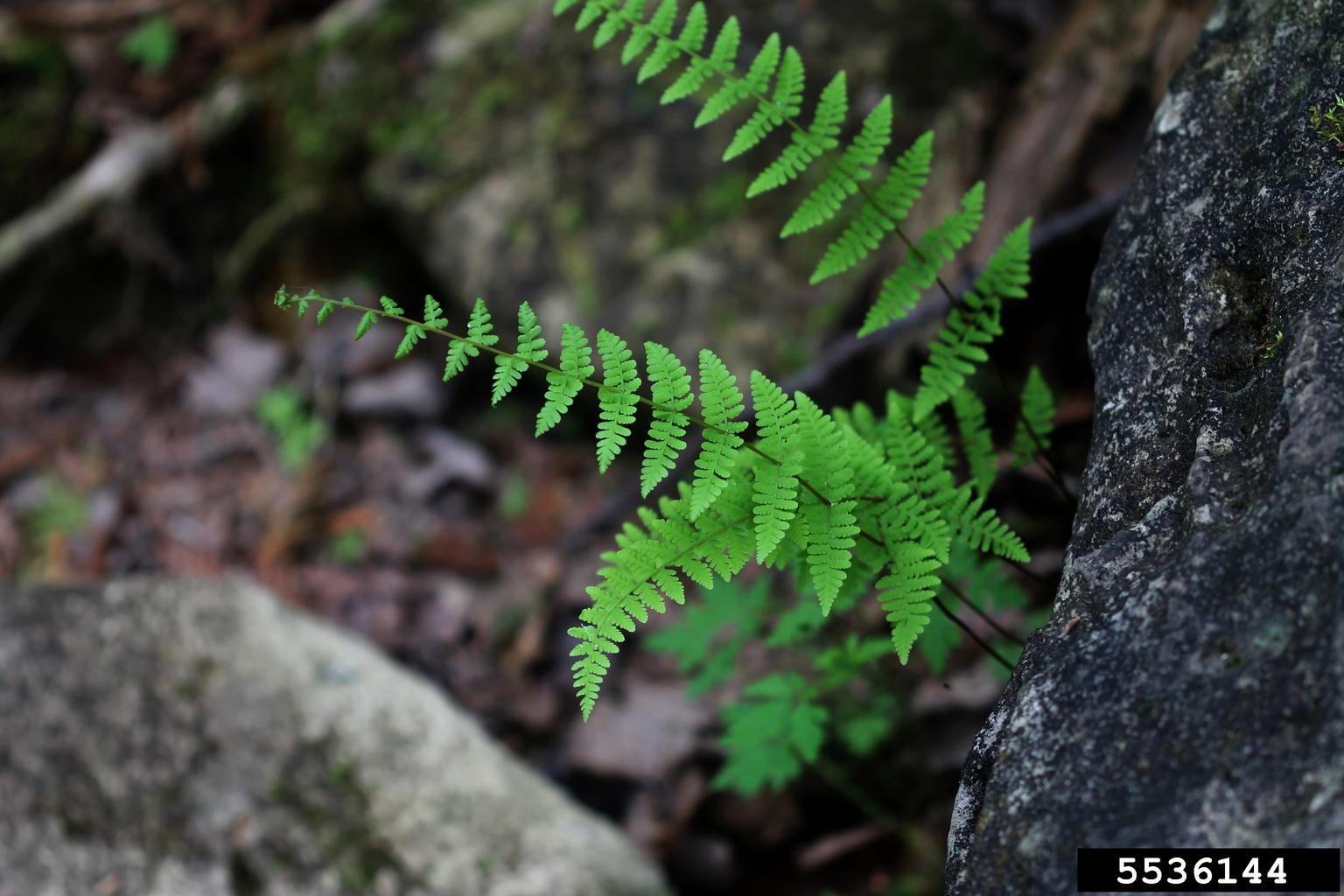Bladder Fern Care – Tips On Growing Bladder Ferns In Your Garden


If you have been on a nature hike in Eastern North America, you have likely come across bladder fern plants. The bulblet bladder fern is a native plant found in shaded cliffs and dry, rocky slopes. Growing bladder ferns in the landscape lends an air of the wild to a naturalized garden. Plus, these little ferns are easy to care for and grow in full to partial shade areas of the garden that are often difficult to populate with many choice plants.
Bladder Fern Information
Bulblet bladder fern (Cystopteris bulbifera) is named for the tiny, green, bladder-like structures on the underside of some leaves. These are potential reproductive structures that eventually fall off and produce new ferns. The fern is a rock-loving species found in limestone or sandstone formations. As part of the home garden, they add lacy-leaved elegance and low maintenance greenery to the shadier spots in the landscape. Bladder fern plants reproduce semi-vegetatively but also develop spores which fuel the development of the bulblets. These are found on the underside of leaves on the stem which divide the leaflets, or pinnae. Bulblets are bright green, semi-glossy, and start out as tiny balls, developing into kidney-shaped pre-leaves. When mature, these bulblets fall off the parent plant and can become new ferns in the correct conditions. Dividing the spreading rootstock is another way of growing bladder ferns. To add to bladder fern information, a single adult frond can produce more than 50 bulblets, indicating the ease of spread of this little plant. As a result, bladder ferns make excellent ground cover over time, increasing their numbers in just a few seasons exponentially.
Conditions for Growing Bladder Ferns
Bladder ferns prefer moist soil in dappled areas. The plants are often found in tree-lined outcrops and cliff sides. The leaves are deciduous and spread by prolific rhizomes. They can thrive in sandy, clay, or loam soil but requires good drainage. The ferns are also adaptable to any pH soil. Healthy plants need a thin layer of organic material, which in nature casually filters into the crevasses the plant prefers to grow into and slowly breaks down to release nutrients. In the home landscape, a little bit of well-rotted compost added to the planting hole will increase plant health. Always plant ferns at the depth in which they were installed in their nursery container. A note about acquisition of the plants: Do not harvest these or any other plant from the wild, as such activities can disrupt the careful balance of nature and potentially harm existing populations. Be sure to obtain plants from a reputable nursery that specializes in them.
Bladder Fern Care
Bladder fern is a low maintenance plant if situated in conditions it prefers. Low to medium light conditions favor the plant. In fall, when cold temperatures arrive, the leaves will begin to die back. Leave the dead foliage on the plant, if possible, over winter to form a type of protective canopy over the core. In late winter to early spring, cut off the dead leaves to make way for new leaflets. There is no need to fertilize this fern but, in fall, spread compost around the base of the plant to gradually break down and feed the roots. Bladder fern care is minimal and the plant is fast growing, spreading quickly. In the garden, the plant will make a lush, green ground cover from spring to fall.
Sign up for the Gardening Know How newsletter today and receive a free copy of our e-book "How to Grow Delicious Tomatoes".

Bonnie Grant is a professional landscaper with a Certification in Urban Gardening. She has been gardening and writing for 15 years. A former professional chef, she has a passion for edible landscaping.